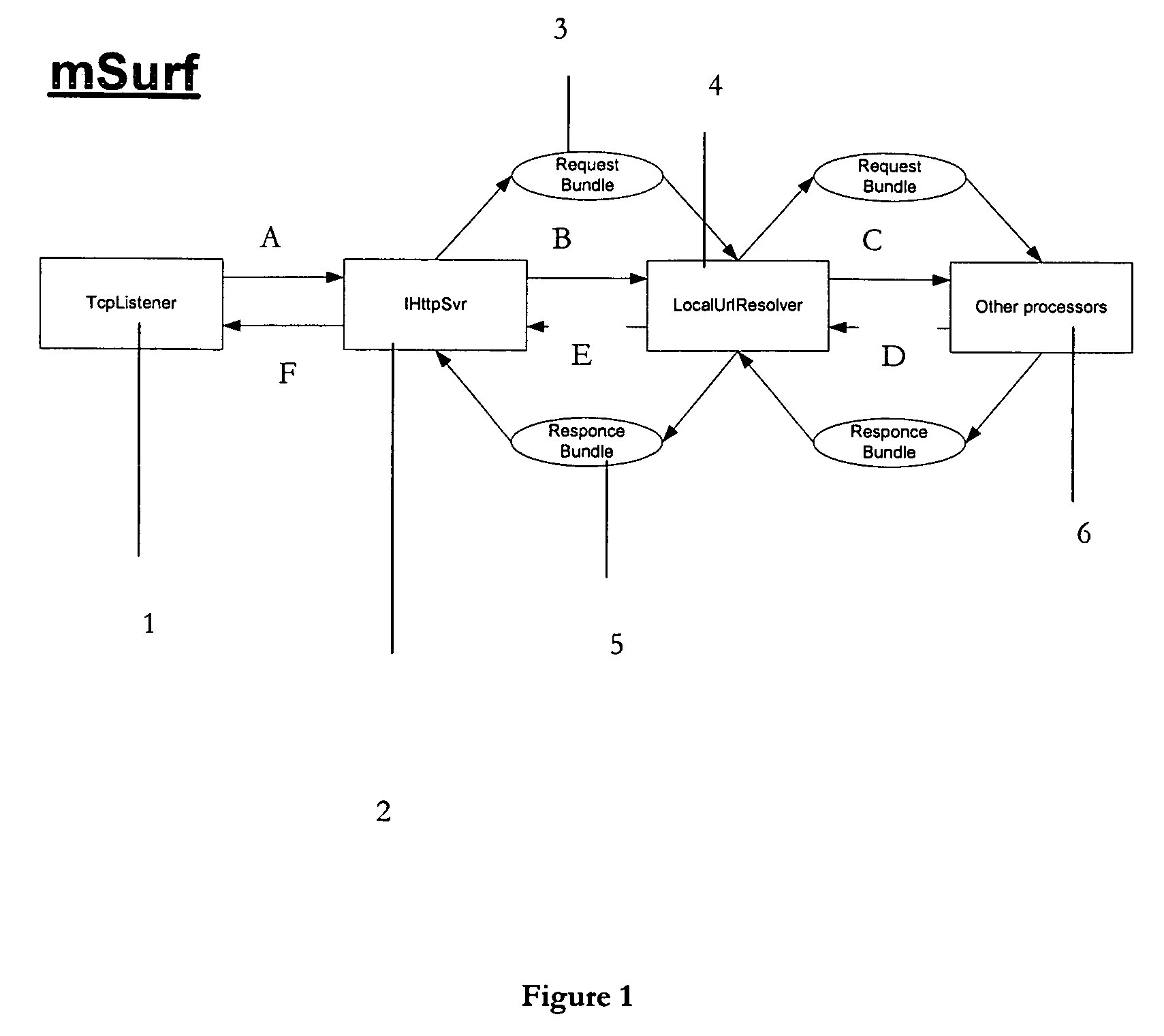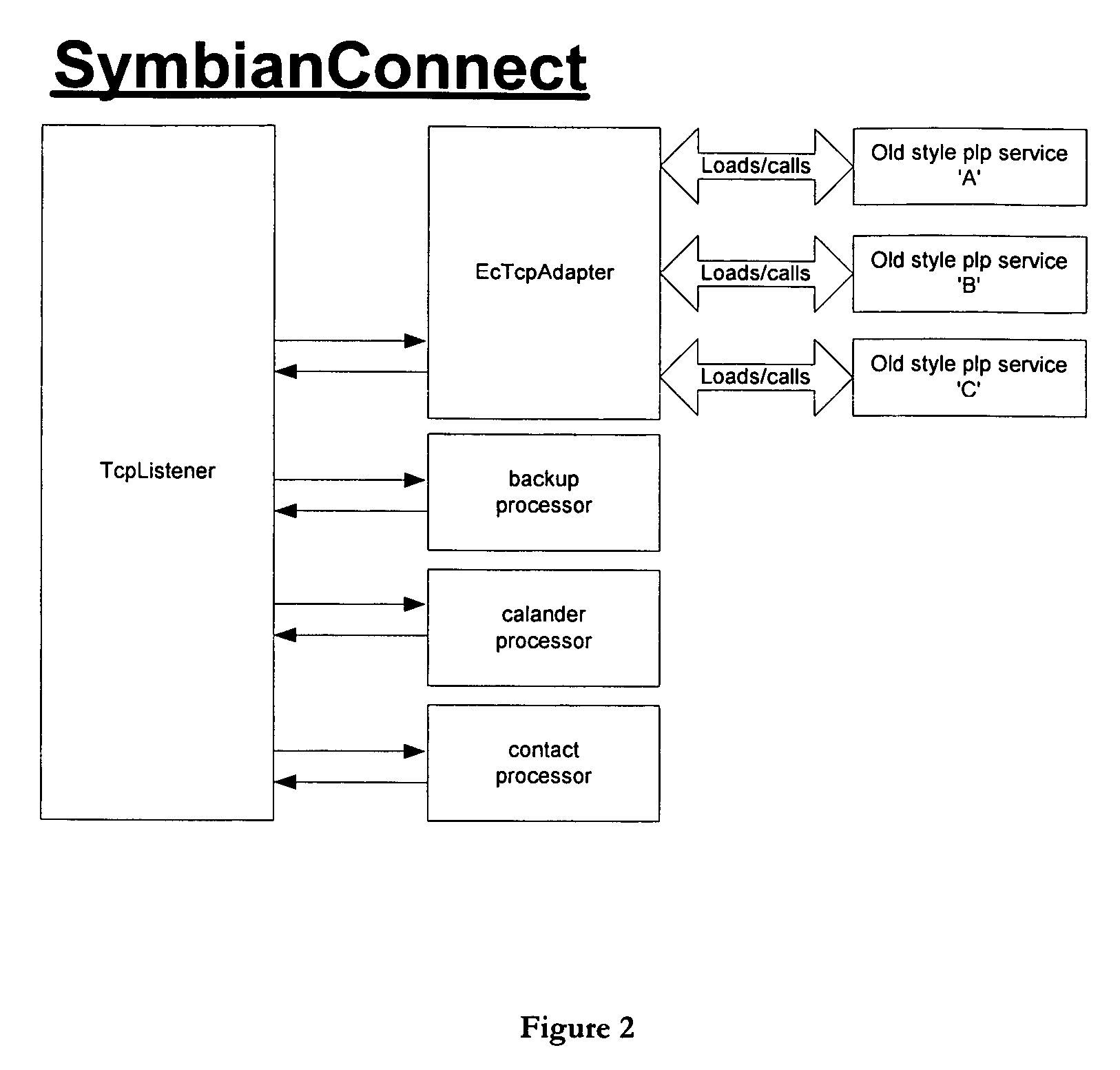Method of developing software programs for resource constrained mobile computing devices
a mobile computing device and software development technology, applied in the field of mobile computing device software development, can solve the problems of insufficient deep (i.e. simple) abstraction level of current software development methodologies, severe design constraints on the program developer, etc., to avoid unnecessary data replication, easy to add new features and functions, and functionality can be extended.
- Summary
- Abstract
- Description
- Claims
- Application Information
AI Technical Summary
Benefits of technology
Problems solved by technology
Method used
Image
Examples
Embodiment Construction
A commercial implementation of the present invention is available from Intuwave Limited of London, United Kingdom. It is called mStream. mStream has been implemented for the Symbian platform, a leading OS for mobile computing devices. A port to Microsoft Win CE has also been achieved. In mStream, the first object is called a ‘pipe’. The second object is called a ‘bundle’. mStream includes a set of libraries that can be used to implement ‘tasks’ (also known as ‘pipe processors’) which conform to the abstract API definitions that define how to write, create, call or use a task which handles pipes and / or bundles.
Pipes
Pipes are objects that define the transmission of raw binary data between 2 ends, preserving the order of that data. Pipes are hence the highest (i.e. most simple) level abstraction of a transmission medium; as such, they need know nothing about the data they pass, unlike request / response transmission systems such as FTP or SOAP.
Summary of Pipe Mandatory Properties:
...
PUM
 Login to View More
Login to View More Abstract
Description
Claims
Application Information
 Login to View More
Login to View More - R&D
- Intellectual Property
- Life Sciences
- Materials
- Tech Scout
- Unparalleled Data Quality
- Higher Quality Content
- 60% Fewer Hallucinations
Browse by: Latest US Patents, China's latest patents, Technical Efficacy Thesaurus, Application Domain, Technology Topic, Popular Technical Reports.
© 2025 PatSnap. All rights reserved.Legal|Privacy policy|Modern Slavery Act Transparency Statement|Sitemap|About US| Contact US: help@patsnap.com



